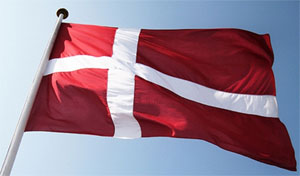Danish pension funds are investing in a new government fund that will return 12% on climate change projects, showing that making money while healing the earth’s climate go hand in hand.
For the next four years, the Danish Climate Investment Fund will finance climate change mitigation – energy efficiency and renewable energy – and adaptation projects – disaster preparation and coastal management – in developing countries.
The only caveat for funding specific projects is that they must involve a Danish partner as co-investor or participate as a supplier of equipment or technology.
Between government and private pension funds, the Danish Climate Investment Fund will have about $261 million to work with.

Denmark’s Climate Targets
In 2012, Denmark passed legislation that sets a target of 100% renewable energy by 2050, and it is updating its milestones to get there.
Not satisfied with the original target of cutting emissions 35% by 2020 (below 1990 levels), the parliament raised it to 40%. This is a legally binding requirement that mandates government assess its progress every five years and set new 10-year targets.
The legislation also establishes a Climate Council, modeled on the approach taken in Britain. It will advise the government on an on-going basis on how to keep reducing reliance on fossil fuels.
As of 2012, 43.1% of Denmark’s electricity comes from renewable energy and 25.8% of all energy.
Not surprising, Copenhagen is named Europe’s Green Capital for 2014.
Another part of the plan is to cut emissions 12% below 2006 levels by 2020. Since the country’s been investing in efficiency since the 1970s energy crisis, they are far along, having conquered energy growth. "As President Reagan was pulling solar panels off the White House roof, Denmark continued to spend money improving its building and power plant efficiency," notes Dan Haugen in Midwest Energy News.
How Denmark Works
When Denmark passes regulations, it does so through a negotiation between the government (in this case, Danish Climate, Energy and Buildings Ministry) and relevant industry trade associations (in this case, about 450 energy distribution companies, including oil, electricity, natural gas and district heating.)
Together, they set targets that get updated every three years. The current national goal is to cut energy use by 3,000 gigawatt hours for 2013-2014, and 3,400 gigawatt hours for 2015.
Each industry sector is assigned a share of that target based on its market share. Trade associations then assign their own targets for individual companies, also based on market share. Utilities can buy or sell savings certificates with each other when one company exceeds their own requirements for the year, explains Haugen.
Every year since 2007, when this program began, companies have exceeded their targets.
And although utilities were at first somewhat resistant, they too have bought in. That’s because the program is extremely flexible – all the government cares about is meeting the target, not how.
Also, Denmark separates production and distribution in the utility sector, so that distribution companies can pursue energy savings without fear of declining revenues. That’s spurred many distribution companies to enter the efficiency business where they make money on helping people use less energy.
Read the full article, "How Denmark turned an efficiency obligation into opportunity":

Denmark is taking true initiative which is going to boost profit and manage a sustainable and secure investment. Denmark is become role modle in this regard. Naeem ul Fateh